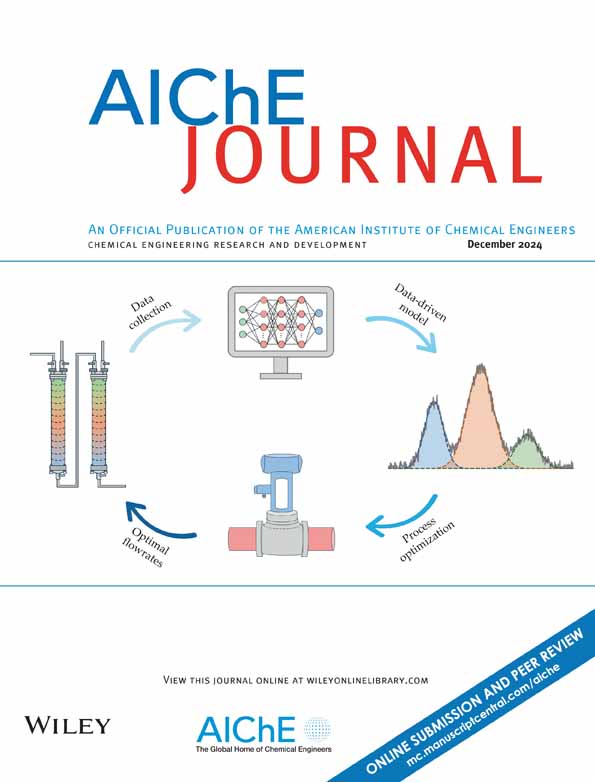Lattice Boltzmann modeling of phosphoric acid leaching process in high‐temperature proton exchange membrane fuel cells
IF 4
3区 工程技术
Q2 ENGINEERING, CHEMICAL
引用次数: 0
Abstract
As the primary proton‐conducting carrier in high‐temperature proton exchange membrane fuel cells (HT‐PEMFCs), the leaching process of phosphoric acid (PA) substantially accelerates performance decay and reduces the lifespan of PEMFCs. A three‐dimensional Lattice Boltzmann Method model is presented to simulate the PA leaching process in HT‐PEMFCs by coupling the catalytic layer structures generated by the improved quartet structure generation set method. The model demonstrates high efficiency, accuracy, and realism. Based on this model, the process of PA droplets invading the catalytic layer is described in detail, and the influence of factors such as porosity on fluid dynamics is analyzed. The results indicate that in the catalytic layers with different porosities,高温质子交换膜燃料电池中磷酸浸出过程的晶格玻尔兹曼模型
作为高温质子交换膜燃料电池(HT - pemfc)的主要质子传导载体,磷酸(PA)的浸出过程大大加速了pemfc的性能衰减,降低了pemfc的寿命。提出了一种三维晶格玻尔兹曼方法模型,通过耦合改进的四重奏结构生成集方法生成的催化层结构来模拟HT‐pemfc中PA浸出过程。该模型具有较高的效率、准确性和真实感。在此模型的基础上,详细描述了PA液滴侵入催化层的过程,并分析了孔隙率等因素对流体动力学的影响。结果表明:在不同孔隙率的催化层中,ε = 54%时,液滴侵入减少,压力升高可接受;更小的液滴、更低的气速条件、更厚的催化层和更大的接触角更有利于减轻PA侵入的影响。
本文章由计算机程序翻译,如有差异,请以英文原文为准。
求助全文
约1分钟内获得全文
求助全文
来源期刊

AIChE Journal
工程技术-工程:化工
CiteScore
7.10
自引率
10.80%
发文量
411
审稿时长
3.6 months
期刊介绍:
The AIChE Journal is the premier research monthly in chemical engineering and related fields. This peer-reviewed and broad-based journal reports on the most important and latest technological advances in core areas of chemical engineering as well as in other relevant engineering disciplines. To keep abreast with the progressive outlook of the profession, the Journal has been expanding the scope of its editorial contents to include such fast developing areas as biotechnology, electrochemical engineering, and environmental engineering.
The AIChE Journal is indeed the global communications vehicle for the world-renowned researchers to exchange top-notch research findings with one another. Subscribing to the AIChE Journal is like having immediate access to nine topical journals in the field.
Articles are categorized according to the following topical areas:
Biomolecular Engineering, Bioengineering, Biochemicals, Biofuels, and Food
Inorganic Materials: Synthesis and Processing
Particle Technology and Fluidization
Process Systems Engineering
Reaction Engineering, Kinetics and Catalysis
Separations: Materials, Devices and Processes
Soft Materials: Synthesis, Processing and Products
Thermodynamics and Molecular-Scale Phenomena
Transport Phenomena and Fluid Mechanics.
 求助内容:
求助内容: 应助结果提醒方式:
应助结果提醒方式:


